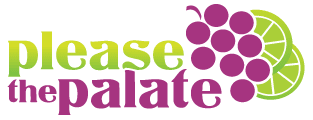
16 Jul The Blind Leading The Blind: A blind wine tasting of Prosecco DOC wines
When we taste wine, we start with our eyes. Without our sight, we cannot see the color of the wine but we can use our other senses to describe a wine. Dr. Hoby Wedler, born without sight, unveiled his blind-tasting perspective at a tasting of Prosecco wines. And to understand his perspective, we all donned eye masks to blind taste with him as I wrote about in Men’s Journal and share here.
When we taste wine, we start with our eyes. It starts with the shape of the bottle and the label. Then we look at the color. There are many visual cues that tell us about a wine, whether it is red, white, rosé, or orange; whether it is still or sparkling; whether it was filtered or not. We can also tell the maturity of a wine. “Eyesight accounts for 85-95% of what we take in from our surroundings”, explained Dr. Hoby Wedler who has been blind since birth.
When you take away the visual portion of wine, you use other senses such as sound, touch, smell, and taste. And that is what we did to celebrate National Prosecco Week when Dr. Hoby Wedler told us to put on blindfolds before we started the tasting. He explained that we would get a unique and refreshed look into one of the most renowned wine appellations in the world and learn what Prosecco can be.
Hoby is a chemist, an entrepreneur, and a sensory expert. He started cooking as a child and learned how to mix flavors and what flavors work together and which do not. While his sighted friends explored color through painting, he explored flavor through food. And through food, he fell in love with chemistry.
In 2011, Hoby founded a non-profit organization to lead annual chemistry camps for blind and visually impaired students throughout North America. In the same year, he began opening doors to the world of wine aromas by developing Tasting in the Dark, a truly blindfolded wine experience, in collaboration with Francis Ford Coppola. In 2016, Hoby earned his Ph.D. in organic chemistry from UC Davis with the goal that he wanted to teach chemistry to freshmen in college and make it a fun subject. Hoby uses his highly-trained palate and acute sensory insight into his surroundings in his work as a sensory expert and product development consultant. Hoby also co-founded a gourmet seasonings company, Hoby’s Essentials, and is co-founder of Senspoint, a Creative and Marketing firm that works with anyone committed to creating a positive impact.
Sitting in front of us were seven empty wine glasses, a glass of water, and a white stone-like kit. We were told to look at our surroundings and then put on the blindfolds. We were about to blind wine taste, literally. It was not going to be about looking at the pale straw color or the rich and persistent perlage of tiny bubbles. With the blindfold, we were going to focus our attention and use sound, touch, smell, and taste to really enjoy the Prosecco.
Blindfolded, we started by running our fingers along the rim of the kit which had braille-like dots. On the left side, there was one dot, two dots, and three dots and on the right side, there were four, five, and six. Inside the kit, designed by Hoby, were six tins, corresponding to the braille dots. The tins, three on each side, represented three aromas and three textures inspired by Prosecco. On the textured side, one felt like a combination of satin and sandpaper, another of smooth pearls, and the third was cork. On the aroma side, one tin smelled like crème brulé, one smelled like citrus and raspberries, and one was cool rocks.
One by one, the wines were poured. We reached in front of ourselves to find the glass and then smelled it and tasted it. To the touch, the glasses were cold.
The first Prosecco had apple and citrus notes. It was crisp and fresh. It was Valdo, Prosecco DOC Brut, and had 12 g/l residual sugar.
The second Prosecco had lots of floral aromas, as well as notes of yellow apple. It was delicate on the palate. It was Ruggeri, Prosecco DOC Brut and had 12 g/l residual sugar
The third Prosecco had aromas of golden apple and mountain flowers. There was a richness on the mid palate and a sweet finish. It was Villa Sandi, Prosecco DOC Brut and had 14 g/l residual sugar.
The fourth Prosecco had notes of white flowers, melon, and hazelnut and a fresh and long finish. It was Scarpetta, Prosecco DOC Brut.
The fifth Prosecco had more pronounced aromas of citrus, honeysuckle, white peach, pear, and wild strawberries. It was rich on the palate and a bit sweet. But because we tasted it blind, we did not know it was a Prosecco Rosé. It was La Marca Prosecco DOC Extra Dry Rosé 2022.
The sixth Prosecco had notes of apple, peach, and sage. It was Polvaro, Prosecco DOC Extra Dry.
The seventh wine had notes of green apple, pear, peach, and wild red berries. I had guessed it was a rosé due to the wild red berry aromas. The wine filled the palate with mouthwatering acidity. It was Val d’Oca, Prosecco DOC Extra Dry Rosé and had 14 g/l residual sugar.
After tasting through the seven Prosecco wines, we took off our blindfolds. We could now see the various shades of the Proseccos and the tiny bubbles in the glass. But smelling and tasting them without seeing what we were tasting let Prosecco’s freshness and aromatics shine.
Read the original story in Men’s Journal.
Discover more from Please The Palate
Subscribe to get the latest posts sent to your email.








